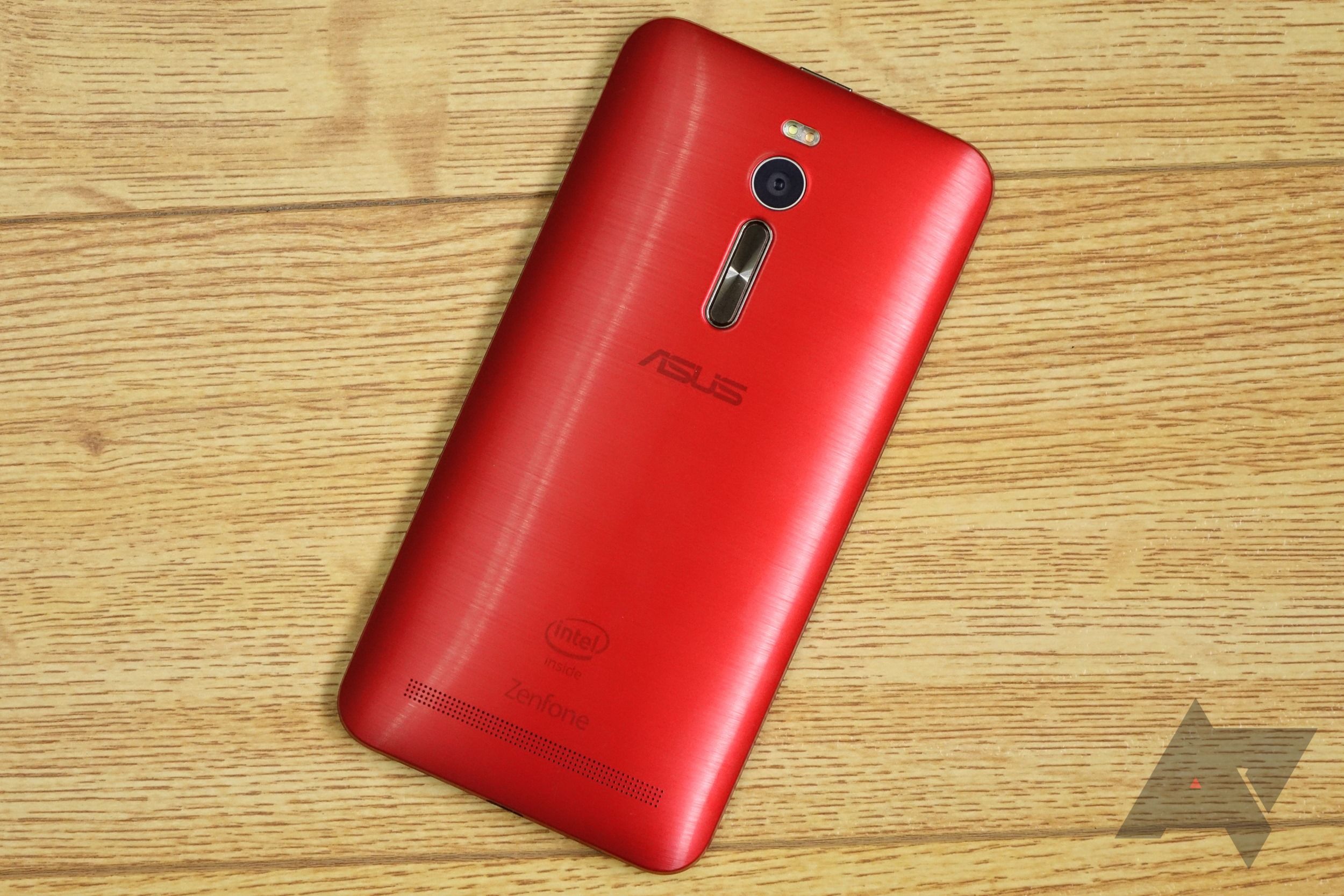When you think smartphones, ASUS probably rarely comes to mind. While the company has been building Android phones for several years now, their market penetration outside of Asia has been relatively low, and so they rarely get much attention in American or European markets. But the ZenFone 2, when it launched at CES six months ago, definitely raised eyebrows.
At a starting price of just $199, ASUS is offering up a phone with extremely impressive specifications for a do-a-double-take MSRP - it almost sounds too good to be true. Thankfully, I don't think it is - the ZenFone 2 is a solid phone that works pretty much like any Android 5.0+ device you'll encounter while simultaneously blowing the doors off pretty much any competitor at this price point for raw spec sheet power.
Alas, the ZenFone 2 is not without an Achilles' heel, and that is undoubtedly ASUS's heavy-handed ZenUI. The company seems to have a obsession with developing app upon app and feature upon feature, most of them totally redundant - if not borderline useless. Between that and some unpredictable battery life, the ZenFone 2 isn't without drawbacks. But as a tinkerer's phone, this could be a worthy purchase to investigate, especially the $199 version.
THE GOOD
|
Display |
While the brightness isn't outstanding, the ZenFone 2 has a 1080p IPS with great viewing angles and solid colors. It's also nice and big, at 5.5". |
|
Graphics performance |
This is easily the most powerful GPU you're going to find in a new phone under $250, and by a wide margin. The CPU is no slouch, either, by the way. |
|
Quick charging |
The ZenFone 2 supports Quick Charge 2.0, something you simply don't get in most budget phones. It's very nice to have. |
|
Dual SIM |
If you want it? One of them is only 2G, though, so I doubt this feature will get much use here in America. |
|
Bargain |
The $199 ZenFone 2 has, I think, the single best specification-to-dollar ratio of any phone released this year. It really is incredibly good value for money. |
THE NOT SO GOOD
|
Battery life |
It's unpredictable. On Wi-Fi, the ZenFone 2 lasts just as long as I'd expect of any big-screened Android phone. On mobile data? It can chew through the battery fast if you're actually using it. |
|
Camera |
Mediocre, but not at all bad for $200. I think this is the same sensor HTC is using in the One M9 (a Toshiba unit), and it's not great. But again, at this price point? It's still near the top of the pile. |
|
Bulky |
This is a thick, heavy, tall phone. It's about the size and weight of a Galaxy Note 4, but thicker and not quite as wide. |
|
Bloat |
ZenUI lays on the "extras" pretty thick. There are tons of ASUS-branded apps and utilities you'll never use, and the OS feels a bit janky at times with the amount of extra stuff ASUS has crammed in. It can also make finding some things confusing. |
|
$299 version |
Seems unnecessary. At $300, your options open up quickly in terms of discounted 2014 flagships, and I just don't think there are $100 of improvements to be had in the more expensive phone. The $199 model is where it's at. |
|
Capacitive navigation keys |
They're not even backlit. Groan. |
Design and build quality
The ZenFone 2 is not what I'd call a traditionally "pretty" phone. Now, it's very traditionally ASUS-pretty, but I personally am not a fan of the company's product styling. While I do love that ASUS gets fun with its color selection (really, more choice is better), you can tell this a phone made by a company that is predominantly a PC component and laptop manufacturer. The concentric metallic circles on the front "chin," power button, and rear volume rocker, the ASUS logo emblazoned on the front, the seam-heavy design - it all feels pretty busy. While the ZenFone 2 doesn't necessarily feel cheap, it does feel a bit... slapped together. It's thick. It's heavy. Cohesive industrial design also kind of seems secondary to showing off here, but that's ASUS for you.
Functionally, the design is equally odd at times. The power button is on top (why), the volume rocker is on the back (not bad, but also strange/random), and it has capacitive navigation buttons. For a phone running Lollipop in 2015, it just comes off as kind of weird. The volume rocker I personally like, though I can't help but feel the frustratingly-placed power button isn't in there too a la LG because there's some fear at ASUS that they'd be called a "knockoff."
Screen bezels definitely lean on the budget-phone side, but they're not abnormally large.
Display
The 5.5" IPS LCD on the ZenFone 2 is a decent screen, don't get me wrong, but it's also not an outstanding one. Colors are a bit dull (reference device: Galaxy S6 set to "basic"), and white balance is definitely on the cool side in the default setting (switching to reading mode evens it out a bit). Still, colors seem well-balanced and fairly accurate, a nice reprieve from the saturation you find many other OEMs like HTC and LG resorting to these days in order to look more AMOLED-y.
Maximum brightness is, unfortunately, quite low on the ZenFone 2, and in direct sunlight it can be a real bear to read compared to similarly-priced phones like the Alcatel OneTouch Idol 3 and Huawei Ascend P8 Lite. It's just not that bright. The ZenFone does win out on viewing angles easily though - color cast is absolutely minimal, and black cast is far less noticeable than the aforementioned Huawei and Alcatel devices. This is, frankly, a better panel than either of those phones offer, it's just that the low maximum output may make it seem a bit dim in high ambient light. But with the increased effective ambient contrast those flexible viewing angles provide, I'm not sure it's really that much worse in the real world in terms of visibility.
On the whole, for $199 as in the version I have for review here, this is an outstanding screen at the price point. It doesn't look like a budget phone's screen, I'll say that.
Battery life
This one has been tricky for me. Some days, it's great! Others, it's not. I find that the difference generally has to do with the strength of the mobile network I'm working with. If it's on Wi-Fi, the ZenFone 2 will last all day pretty easily unless you're really pushing the screen-on time, even when it's set to maximum brightness.
On LTE, it's less predictable. This is an Intel modem in here, so we're charting little-explored territory in the US. When LTE signal is reliable and strong, the ZenFone 2 didn't appear to have appreciable better or worse battery life than I would expect for a phone of this size, and idle battery life generally is very respectable.
When signal is weaker, as in my apartment, it's a different story. Battery life in this scenario is mediocre, though not terrible. When going back and forth across the bay last week during Google I/O, I found the ZenFone could gobble up its battery pretty expeditiously as signal came and went while I was on the subway, or travelling in the car. In these cases, I was generally happy to have my battery-equipped messenger bag by around 5PM to get the phone back to a level I knew it would survive for the rest of the night.
The ZenFone 2 doesn't get poor battery life, and it can in fact in some situations provide quite respectable longevity, but my problem was the lack of predictability. That made it a slightly more difficult phone to travel with. The phone also ships in the "smart saver" battery mode, which I believe staggers push notifications similar to Sony devices and iOS devices to save battery. I didn't test the phone outside of this mode.
Storage, wireless, and call quality
The ZenFone 2 in the $199 trim comes with 16GB of internal storage, and a second SIM slot that doubles as an SD card slot, as well. Wireless connectivity means the full suite of AT&T LTE bands and most of T-Mobile's (minus band 12), as well as 2.4/5GHz Wi-Fi and Bluetooth 4.0. Bluetooth audio streaming worked fine in my testing, for what it's worth. (Oh, about the dual SIMs: only one supports 3G and LTE. The other is 2G-only, and that's the one that doubles as the microSD slot.) There's also, of course, the 64GB version if you want even more space.
Data signal on my device was generally solid, though I did have more than one occasion where the phone had difficulty reacquiring a data connection after losing it. Rebooting generally addressed this, and it was far from a common issue, but it's not something I've really had to deal with in a smartphone in the last couple years. It gave me mild flashbacks to the horrible days of Verizon's early LTE phones, though the ZenFone 2 was nowhere near that bad.
Call quality was what you'd expect, and the earpiece speaker seems solid. The ZenFone 2 does not support Voice over LTE.
Audio and speakers
I'm actually not super impressed with the headphone audio output, it's definitely on the mediocre side. Most likely, the amplifier piece being used is part of some Intel Atom reference design / bill of materials, and it's not a very good amp (or especially powerful) - sound is muddy and lacks strong dynamic range at high volumes through headphones. The headphone jack is fine for normal earbuds and listening at the gym, but nuanced audio this is not. I'll also say this is something I rarely ever experience with modern smartphones anymore - most of them have come extraordinarily far and audio quality varies only marginally unless you're using extremely sensitive headphones.
The rear speaker is respectably loud, it's just not very good. It's also on the back, which is not very good. For something at this price point, though, it's still decent, it's just not really going to compare well to dual front-facing setups from the likes of Alcatel, HTC, or Motorola. It's not bad, but it's probably exactly what you'd expect for something in the $200-300 range. Dynamic range is minimal, loudness is solid, but it's thoroughly utilitarian in character - it makes noise, and will make noise fairly loud if you max out the volume.
Camera
The problem for me with the ZenFone 2's camera was definitely consistency. Getting it to reliably properly expose an image was difficult, and that comes down to the software ASUS is writing for the camera. Some photos turned out great. I love this shot of a drink I took at a restaurant one evening, and the ambient light wasn't exceptionally high, either.
But then you get crap like this, a picture of a fence with a couple signs on it that almost any other smartphone camera would have no difficulty exposing. For whatever reason, the ZenFone 2 decided to way overexpose the shot and lop off all the details in the signage - I think the brown color of the fence just straight-up confused it.
But then it does something kind of nice like this.
ASUS definitely has a sensor capable of capturing decent images (even if the above one is oversaturated like crazy), but the software just doesn't seem as smart as ASUS would want you to think. Their depth of field mode, for example, is atrocious, and generally just ruins images. I'd say the team on the camera missed the forest for the trees, and instead of focusing on holistic performance, just went wild with gimmicky capture modes like "super resolution" (which super-samples your 10MP photos to 40+MP) or "beautification" and several straight-up clones of old Samsung camera features that they don't even ship anymore, like eraser mode and a GIF creator.
ASUS should look to the example of companies like LG, who focus on making the auto mode of the camera the very best it can be, allowing the user to just sit back and snap. The ZenFone 2 does have a "manual" mode granting you control of the EV, shutter speed, white balance, focus, and ISO, so at least there's that if you want to get fancy. But overall, the camera may be the weakest hardware component on this device - I just don't particularly like it. Here's the full sample gallery.




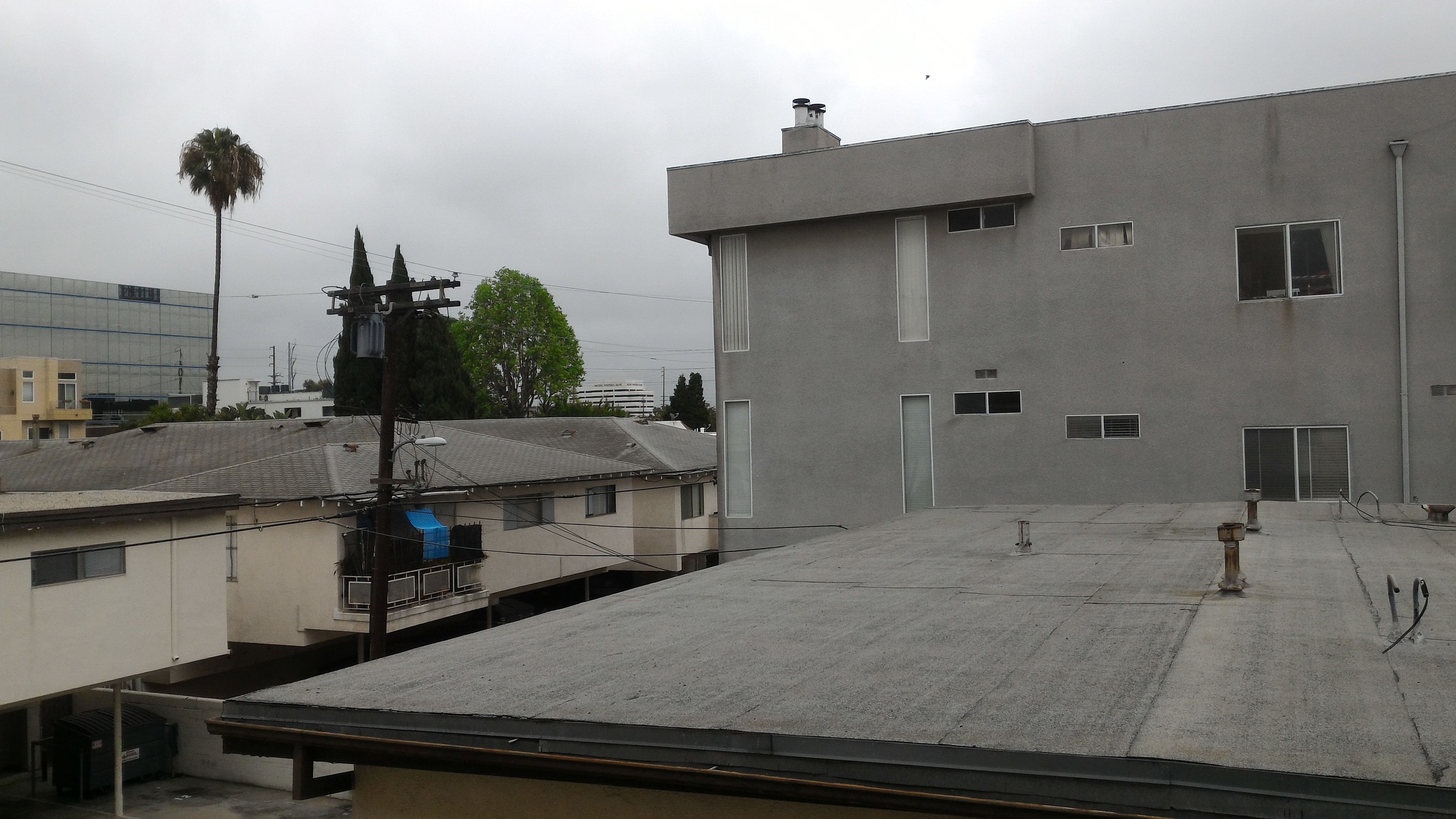
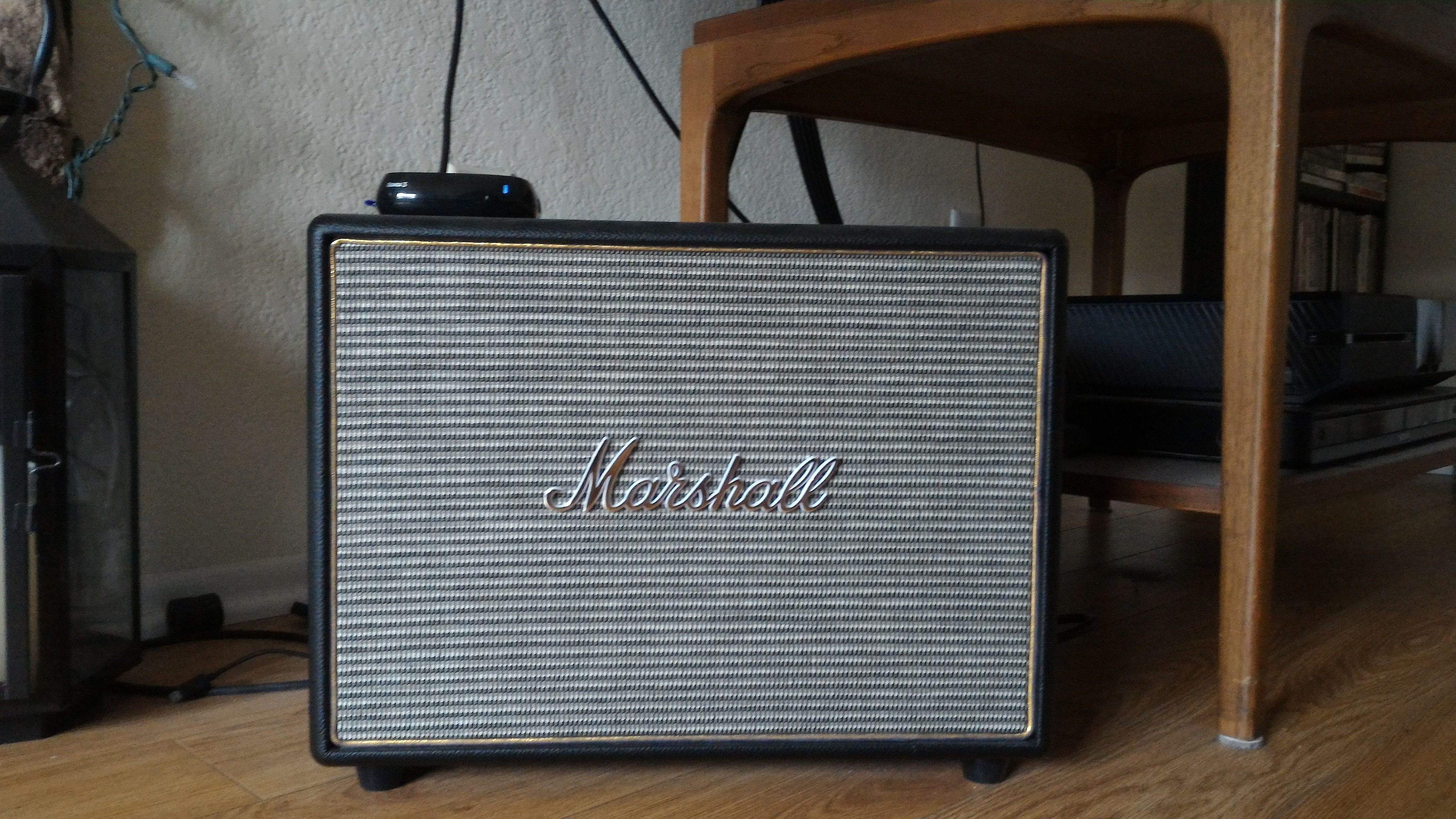
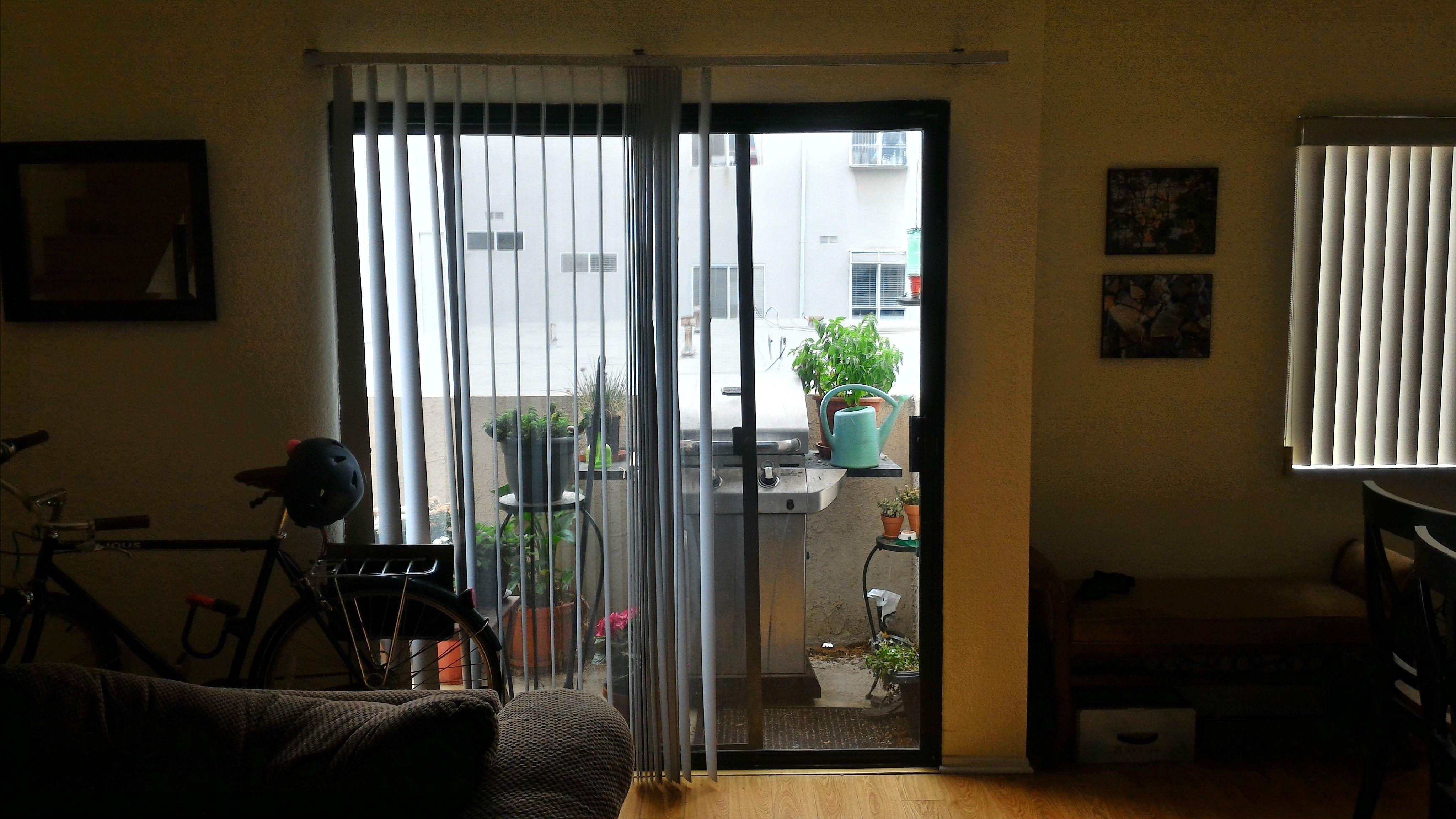
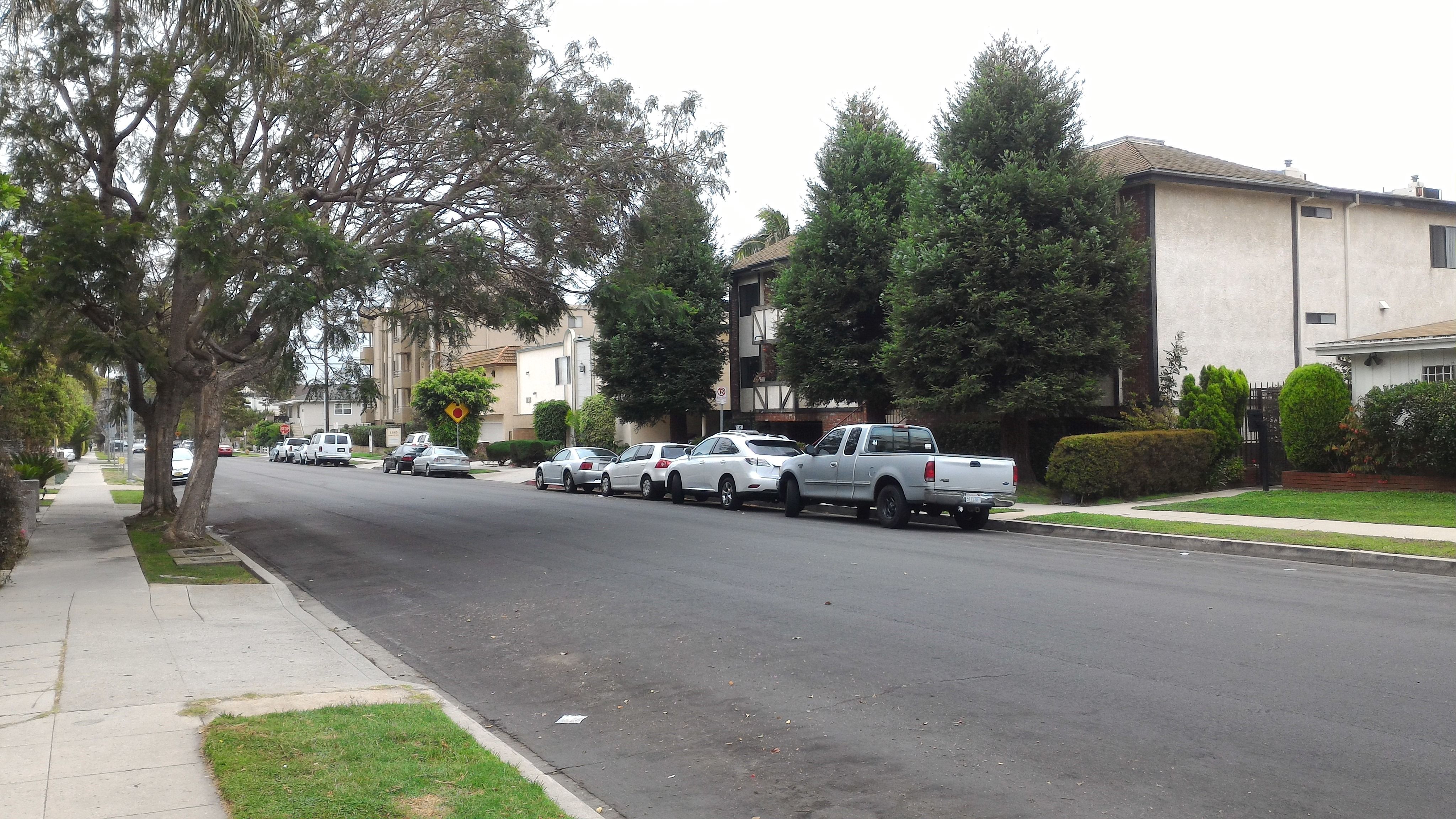
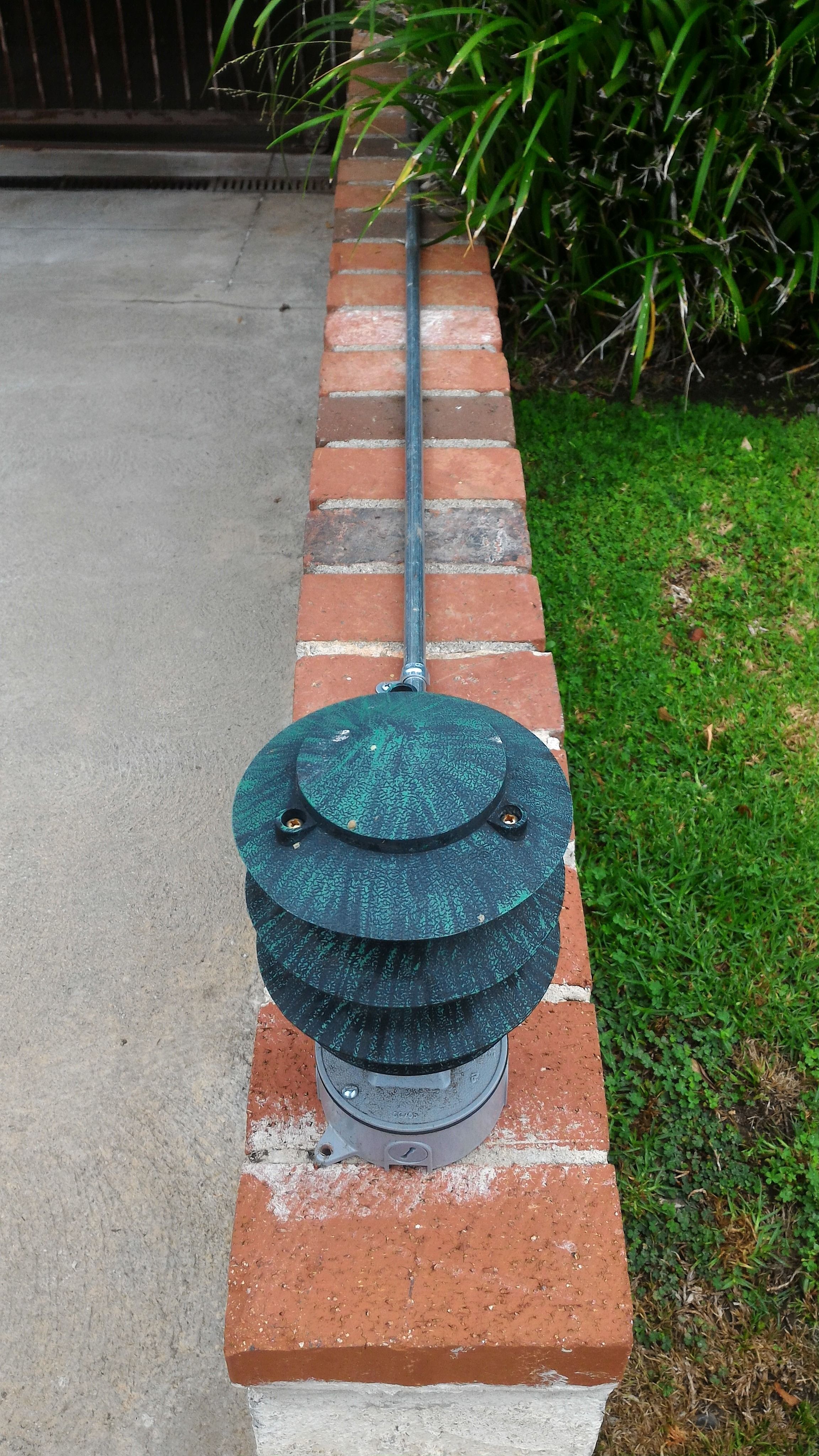


Performance
Very solid! I would say that while the $199 ZenFone 2 isn't super fast, it's also not slow. It feels substantially quicker than Alcatel's OneTouch Idol 3, and while not always as snappy as the $299 version in terms of task switching, the quad-core Intel chipset is clearly more robust than anything in Qualcomm's 600-series portfolio in terms of raw computing power.
Practical performance benchmarks like Google's Octane web suite have the ZenFone 2 outpacing the Snapdragon 615 in the Huawei Ascend P8 Lite and Alactel OneTouch Idol 3 by a huge margin (a score of 5500+ on the ZF2 versus just 2300 on the Huawei), and this becomes readily apparent in things like web page scroll speeds and load times for complex javascript elements. I'm guessing this is down to x86 optimizations in Chrome, given that Chrome has been around in x86 a lot longer. Around the OS, the ZenFone 2 doesn't feel as well-rounded, though, and I can only assume ASUS's UI and general bloat is to blame. It could also be Intel trying to keep power consumption down to a sip, but I just don't know.
When you're inside an app, performance is generally very good, but multitasking lags at times and the system UI can stutter and freak out occasionally. Personally, I'm inclined to blame this on ASUS, not Intel - there is so much going on (30+ preloaded ASUS apps) that I am genuinely curious to see what this phone runs like on a stock Android ROM, because the underlying performance metrics make it obvious this phone is decently quick. AnTuTu, a holistic benchmark, paints a clearer picture to my eyes, with the ZenFone 2 approaching and even surpassing (in $299 trim) a flagship phone, the Galaxy S5, from just a year ago.
The GPU in the Intel Z3560 and Z3580 blows away anything in this price tier from Qualcomm, because Intel has sourced a Rogue unit from PowerVR. You can expect benchmark scores for GPU-bound tasks to be more than double those from the Adreno 405 in Qualcomm's Snapdragon 615, and that is not an exaggeration.
Playing Hearthstone on the ZenFone, which runs notoriously poorly on low-end and mid-range phones, was a substantially smoother experience. Same with Real Racing 3, which was nigh-unplayable on my one Snapdragon 615 device with a 1080p display. At 720p, the Adreno 405 fares better, but that's not an apples to apples comparison - the ZenFone 2 still played games more smoothly at 1080p than any of the Snapdragon 615 phones I have did at 720p. This is clearly just a way more powerful GPU.
Storage performance is definitely decent on the $199 ZenFone 2, but not class-leading. It's somewhere in the middle. On the 64GB version, it's a totally different story, and I think this is most of where your extra $100 are going.
Sequential write performance was nearly triple that of the 16GB version, and random write speeds were a little under double. This means apps will install faster, files may effectively download faster (assuming your connection is quick enough), and games will load more quickly - things I all found very true in practice comparing the two side by side.
Stability
As with my more recent reviews, this section details a list of problems I've had with the device.
- I've had three separate incidents where the phone froze up and required me to hold down the power button and force it off, then back on. Notably, this hasn't happened since the last software update a few days ago.
- One or two occasions where data signal would not return after being lost, requiring a reboot.
- System stutter and jank can be common, but updates seem to be improving it somewhat.
The hard freezes don't make me super happy. I've reached out to ASUS and they're not aware of this particular issue.
Software
Oh boy. You know, I'm going to level with you here: yeah, it's ugly, but for the most part it's usable. I'm not going to review the ZenUI launcher, because frankly, it's not worth the time. You're going to want to replace it - it is absolutely nothing special. I slapped Google Now Launcher on my review unit after 24 hours with the stock launcher and haven't looked back.
Other modifications to the OS are present - the notification / quick settings area, lock screen, multitasking UI, and settings menu are all pretty customized. There are also over thirty pre-loaded ASUS apps and services, and none of them are very interesting. Almost every single one does something that a third party app will do much better, or are simply gimmicky. Things like a "mirror" (literally just the front-facing camera viewfinder), ASUS' social network (yes, really), an app for sharing photos over Wi-Fi direct, an app for sending files to other phones (... with that app), a slideshow creator, a chat client, a collage-maker (really), a link to the ASUS forums - the list goes on and on and on and on.
The software is easily the worst part of the ZenFone 2, which is frustrating, because it's otherwise a very respectable phone. There are some PC-linking features if you use ASUS utilities on your computer, but these are things that should live on the Play Store for people to go download of their own volition rather than being needlessly preloaded on the device. I'm not saying all of the preloaded software is useless, but A.) there's just so much of it, and B.) I really don't have much of an interest in diving into the ASUS Zen Software Ecosystem just because I've purchased an ASUS smartphone. As far as settings that are useful, ASUS has put in some things that I liked.
- Double-tap screen to wake (something almost no device at this price point has out of the box).
- Double-tap volume-down to turn on camera from sleep.
- Glove mode for enhanced touchscreen sensitivity.
- Recent apps long-press can function as a menu button or a screenshot capture key (the latter being quite useful in my opinion).
- App installs can "prefer" to go to SD card by default if compatible.
- Screen color profiles, including the ability to customize the display tone.
And let's not forget it's still Android 5.0, and it still behaves as you would expect an Android device to. While the visual modifications are significant, they rarely seem to interfere with the general functionality of the phone. If anything, the most disruptive change I've found is those damned capacitive hardware keys - they aren't even backlit, so using them in the dark is a real pain. Here's a giant gallery of a bunch of the ASUS customizations on the phone, because there are... a lot.
I just can't help but think the phone would be faster if ASUS hadn't gone mucking around with the system UI. It also would have shipped with more available storage. I also found discoverability of some features, like audio modes, to be poor. Rather than a setting, it's an app. Oh, and the screen tone modes are an app, too, but they're also in the settings. The audio modes aren't. I don't get this - it's what happens when you've got too many separate product teams developing features and apps for a single end product: consistency quickly becomes a casualty in the quantity over quality race.
Also, there are two "cleanup" / anti-virus software apps preloaded on the phones. Disable them immediately, because one checks over every app install. Yeah, gross, I know. But they can be disabled, which you can't always say of all bloatware, so that much is a relief.
Conclusion
The ZenFone 2 may well be the first Intel smartphone actually worthy of your attention, especially if you're the tinkering type. With a de-bloated software experience, I have to think this phone will only get better.
Yes, the camera is mediocre. Yes, the battery life can be subpar. And yes, there are some slightly worrying stability issues (though since the last OTA I'm doing alright), but for $199? Holy smokes, this is a deal. At $299? I probably wouldn't bother. The extra and faster storage is nice, and so is the bonus RAM, but the faster processor is generally not too noticeable and you're still living with all the weaknesses of the cheaper version of the device while simultaneously paying more for the privilege. That really doesn't make much sense, if you ask me.
The $199 ZenFone 2, though, may be the smartphone deal of the year. It's incredibly powerful and well-equipped for the price point, and I'm honestly not even sure how ASUS is making money on them. The phone so outpaces its rivals on general specifications and display quality that it can't not be a deal. Gaming performance in particular seems to be a big advantage over Qualcomm's mid-tier chipsets.
Overall, I was pleasantly surprised by the ZenFone 2, even if it did occasionally frustrate me. I hope ASUS keeps at it, because I really think they've shown here that they have the capability and component-side know-how to produce an inexpensive but powerful smartphone. The software is definitely a bit rough around the edges (though I've seen worse), but at least that's something that can be fixed. As such, the ZenFone 2 is absolutely a worthwhile consideration at the lower price tier. In fact, as far as brand-new phones are concerned here in America, it's probably the most powerful phone you can buy for less than $200.

